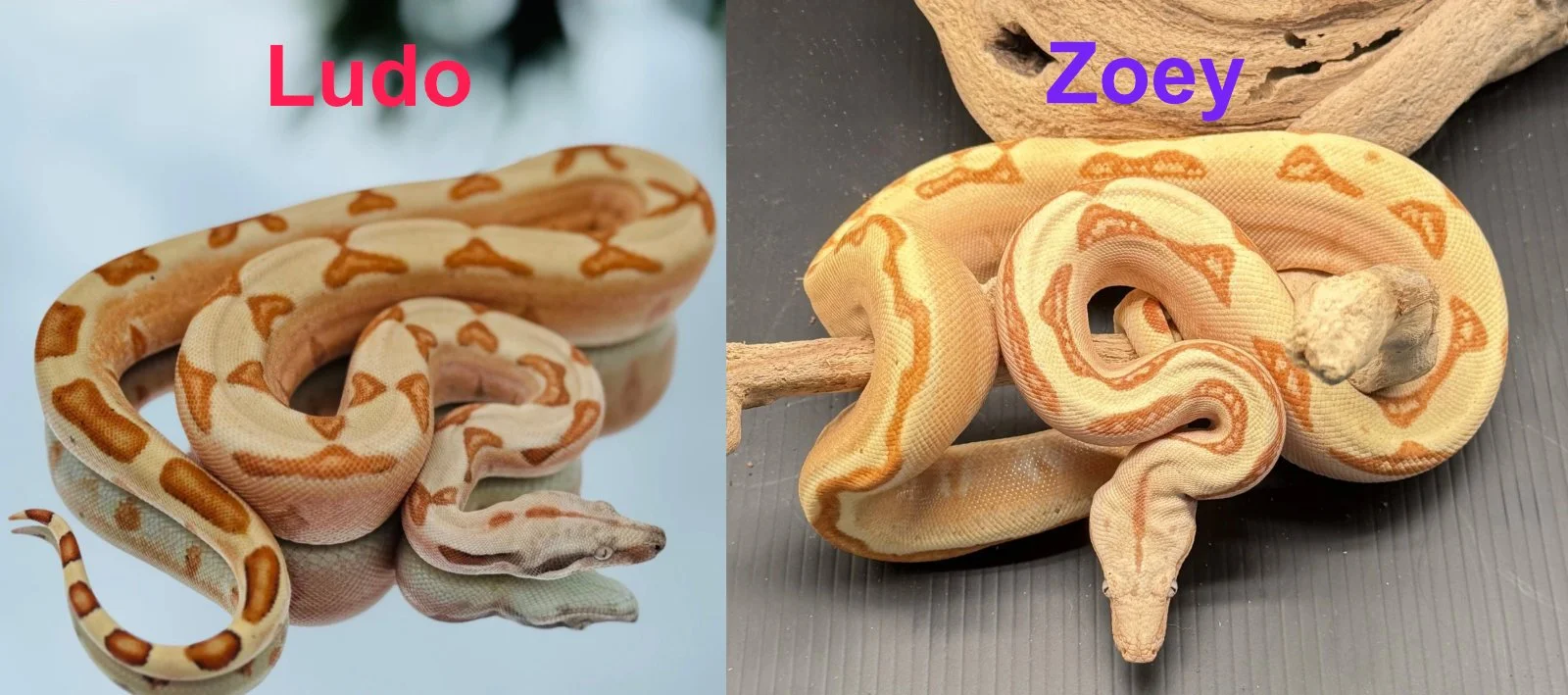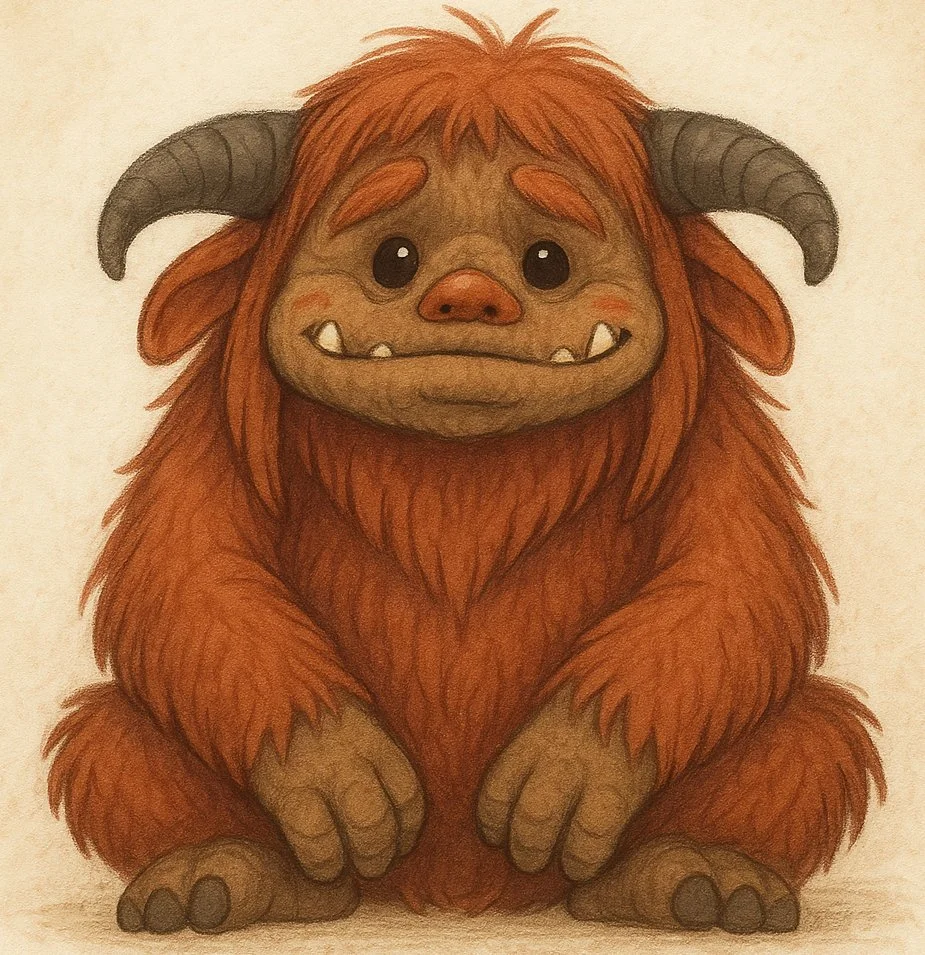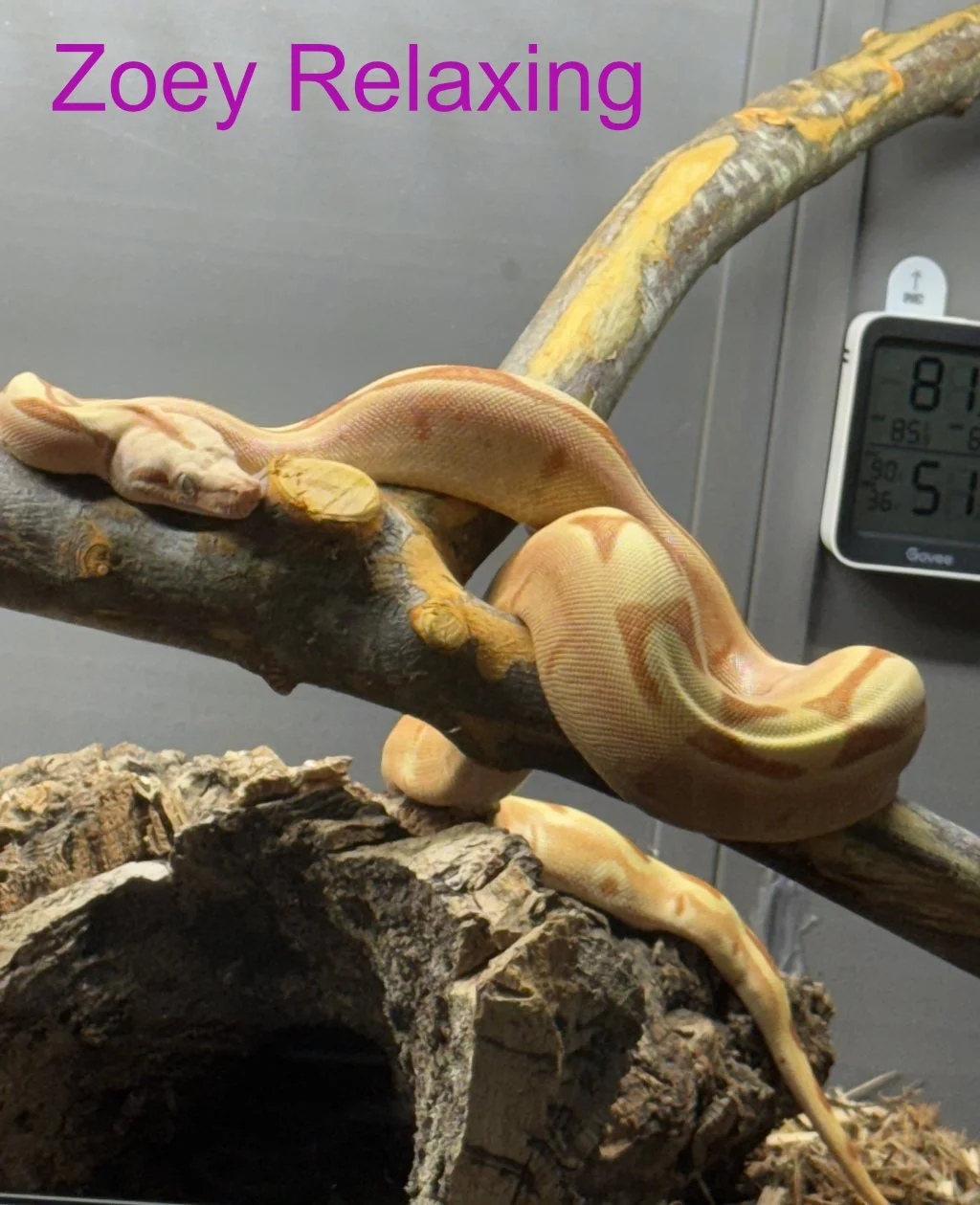Dad's Snake Redemption Arc: Meet Ludo & Zoey!
New Kiley’s Kritters - Boa Imperators Ludo and Zoey!
Remember when Dad was the proud president of the "NO Nope Rope" club? Well, folks, we have some explaining to do. Somehow, some way, that same guy who swore off snakes has managed to add not one, but TWO Boa Imperators to our Kiley's Kritters family. Yeah, we're just as surprised as you are!
The "Send It" Club is Born
Dad blames his childhood buddy for this complete 180. You know, the friend who actually owned the snake that spooked Dad back in his early teens? Well, plot twist—that same friend has been watching our Kiley's Kritters journey from afar and now keeps half a dozen or so Boa species himself. Together, they've ditched the "No Nope Rope" club and formed what we're calling the snake "Send It" club. (Mom rolled her eyes pretty hard at that one.)
This friend kept raving about Boa Imperators—their inquisitive nature, stunning colors, and gorgeous patterns. Before long, Dad found himself scrolling through Morph Market late one Friday evening in early September, completely mesmerized by these beautiful creatures.
The Auction That Changed Everything
Morph Market is famous for auctions, and Dad spotted a usually expensive 10-month-old Hypo, Labyrinth, 66% Het Albino (VPI) with just five minutes left on the clock. The bid was surprisingly low.
Yes, here we go with traits! It's exactly why we initially started getting into the combinations of Ball Pythons—Wanda and Cosmo, who we'll try breeding next season—as well as our Western Hognose pair, Pancake and Maple Syrup.
Dad placed a bid out of pure curiosity, fully expecting to get outbid any second. After all, snakes like this usually go for way more than he'd ever spend.
But as the clock ticked down—4 minutes, 3 minutes, 2 minutes—panic set in. Dad frantically texted his buddy, practically begging him to outbid him! Meanwhile, Mom was walking down the stairs saying, "Don't you dare buy another animal!"
Too late. The auction ended. Dad won.
Gulp.
Even the seller was shocked the snake went that low. When Dad finally confessed to Mom later that night, he promptly received a pillow to the face. But then came the magic words: "Send me the link so I can take a look at it."
One glance at this baby boy's colors and pattern, and Mom was smitten (not bitten—smitten!). Since he has the Labyrinth trait, we named him Ludo, after the lovable character from the David Bowie classic, Labyrinth.
Cartoon depiction of Ludo from the Labyrinth - an old school movie from Mom & Dad’s childhood.
Enter Ludo: The Therapeutic Noodle
When Ludo arrived a few days later, he was everything we hoped for—docile, inquisitive, and surprisingly active compared to our Ball Pythons. Dad discovered something unexpected: bonding with Ludo felt genuinely therapeutic. Unlike Ball Pythons (who we love, but let's be honest—they can have a bit of a pet rock personality), Ludo moves around way more and has real personality. He's curious like a puppy, sweet-natured, and just plain cool to handle.
Then the fascination took a turn. Dad had another lightbulb moment: Boa Imperators give live birth! Imagine how amazing it would be for our Kiley's Kritters crew to witness that experience!
Mom Underestimates Dad's Impulsiveness
It didn't take long before both Mom and Dad were browsing Morph Market again, dreaming up cool genetic combinations for a potential mate. But here's where Mom made a critical error—she underestimated just how impulsive Dad can be.
A couple weeks later, Zoey arrived. She's a Hypo, Labyrinth, Albino (VPI), 66% Het Blood, just over 2 years old. She's a bit bigger than Ludo and has similar colors and patterns, except her visible Albino (VPI) trait makes her colors absolutely pop—much brighter than Ludo's. Kiley named her after her favorite KPop Demon Hunter star, and we thought we had another sweetheart on our hands.
Then we placed her in her temporary tub enclosure, and she immediately coiled up defensively.
Uh oh. We had to take a step back and wonder: what's Zoey's true temperament?
Affectionately known as “Danger Noodle” mode.
The Learning Curve with Zoey
Boa Imperators can be more defensive than other snakes—not aggressive, but defensive—and they're way more food-motivated. We'd watched tons of videos showing hissy, strike-happy Boas, and suddenly we were a little unnerved about what we'd gotten ourselves into.
We gave her a week to settle in, fed her, let her digest, and then Dad made his first attempt—wearing big outdoor snake gloves. Yeah, that didn't go well. Those giant mitts fumbling around her tub made Zoey even more defensive. Dad quickly backed off, put the lid back on, and regrouped.
The next day, armed with a snake hook, smaller mechanics gloves for better agility, and long sleeves tucked into the gloves, Dad tried again. He scooped her out of the tub—no hissing, no striking—just a slightly nervous snake and an equally nervous Dad.
Since then, Dad has made it a point to handle both Boas as often as possible (between feedings, digestion, and sheds). Ludo has become a relaxing, zen-like experience, while Zoey is slowly but surely becoming less nervous with each session. The key to keeping them tame and docile? Consistent handling with positive experiences every time before putting them away.
Their New Homes
Ludo is currently living his best life in a 40-gallon front-opening terrarium with ReptiChip coconut husk/chip substrate. He's pretty content, though his brand-new 5x2x2 EcoFlex Mojave terrarium is still waiting in the box for when he's ready to upgrade.
Zoey has already moved into her spacious 5x2x2 EcoFlex Mojave terrarium. (We snagged two of these beauties on sale from Chewy a few weeks ago—score!)
Ludos temporary 40 Gallon Terrarium (left) and Zoey’s 5×2×2 Ecoflex Mojave Terrarium (work in-progress right).
Care Requirements for Boa Imperators
Enclosure
Size: Juveniles can start in 40-gallon tanks or secure Sterlite like dubs with ventilation holes; adults need at least 6x2x2 feet (or 5x2x2 minimum)
Type: Front-opening terrariums or PVC enclosures work best for maintaining heat and humidity
Keep it clean—spot clean waste regularly and do deep cleans monthly
Temperature
Hot spot: 88-92°F (use an under-tank heater, heat panel, halogen basking bulb, or deep heat projector)
Cool side: 78-82°F
Nighttime: Can drop to 75-78°F
Always use a thermostat to prevent overheating and burns
Humidity
General range: 50-60%
During shed: Bump up to 65-70%
Mist enclosure as needed and provide a large water bowl for soaking
Monitor with a reliable hygrometer
Substrate
ReptiChip coconut husk/chip (our choice!)
Cypress mulch
Aspen (though it doesn't hold humidity as well)
Paper towels or newspaper for quarantine or young snakes
Hides & Enrichment
Provide at least two hides (one on warm side, one on cool side)
Add branches, ledges, or climbing opportunities—Boas love to explore and climb!
Include a large, sturdy water dish for drinking and soaking
Feeding
Juveniles: Every 7-10 days (appropriately sized prey—about the same width as the snake's thickest part)
Adults: Every 10-14 days
Boas are food-motivated—use feeding tongs and be cautious around feeding time! We actually drop feed frozen thawed mice. Safer this way! Drop on a small dish and walk away. Within a few minutes it will start being consumed.
Feed in the enclosure or a separate feeding container (we prefer in-enclosure to reduce stress)
Handling
Handle regularly to keep them tame and comfortable with people
Avoid handling right after feeding (wait 48-72 hours for digestion)
Use a snake hook if needed, especially with defensive individuals
Keep sessions positive, calm, and confidence-building
Don't handle during shed cycles—their vision is impaired and they're more stressed
Health Checks
Watch for clear eyes (except during shed), smooth sheds, and healthy appetite
Check for mites, stuck shed (especially around eyes and tail tip), or respiratory issues (wheezing, mucus, open-mouth breathing)
Maintain clean enclosure and provide fresh water daily
Schedule vet checkups if you notice any health concerns
Shedding
Increase humidity during shed cycle (you'll notice their colors dull and eyes turn blue/cloudy)
Provide a humid hide or moist sphagnum moss
Ensure they have rough surfaces (branches, rocks) to help remove old skin
Check for complete sheds—retained eye caps and tail tips can cause problems
What's Next for Our Growing Family?
Overall, the experience has been incredible for Dad—and honestly, for all of us. Mom stands by his side, offering encouragement and confidence every step of the way. As for Kiley? She's holding off on handling for a few more months until we're all comfortable crossing that bridge together. Safety and confidence first!
But one thing's for sure: Ludo and Zoey have officially stolen our hearts. Who knew the president of the "No Nope Rope" club would end up here? We're calling it character growth—and maybe a little bit of peer pressure from a childhood friend. 🐍💚
The journey from fear to fascination has been wild, and we can't wait to see what the future holds. Maybe live baby Boas? Or is there a different kind of colorful Boa to be introduced in the near future? We'll keep you posted!
What do you think? Have you ever completely changed your mind about an animal you were once afraid of? Visit our Facebook page and drop a comment and let us know your story!










